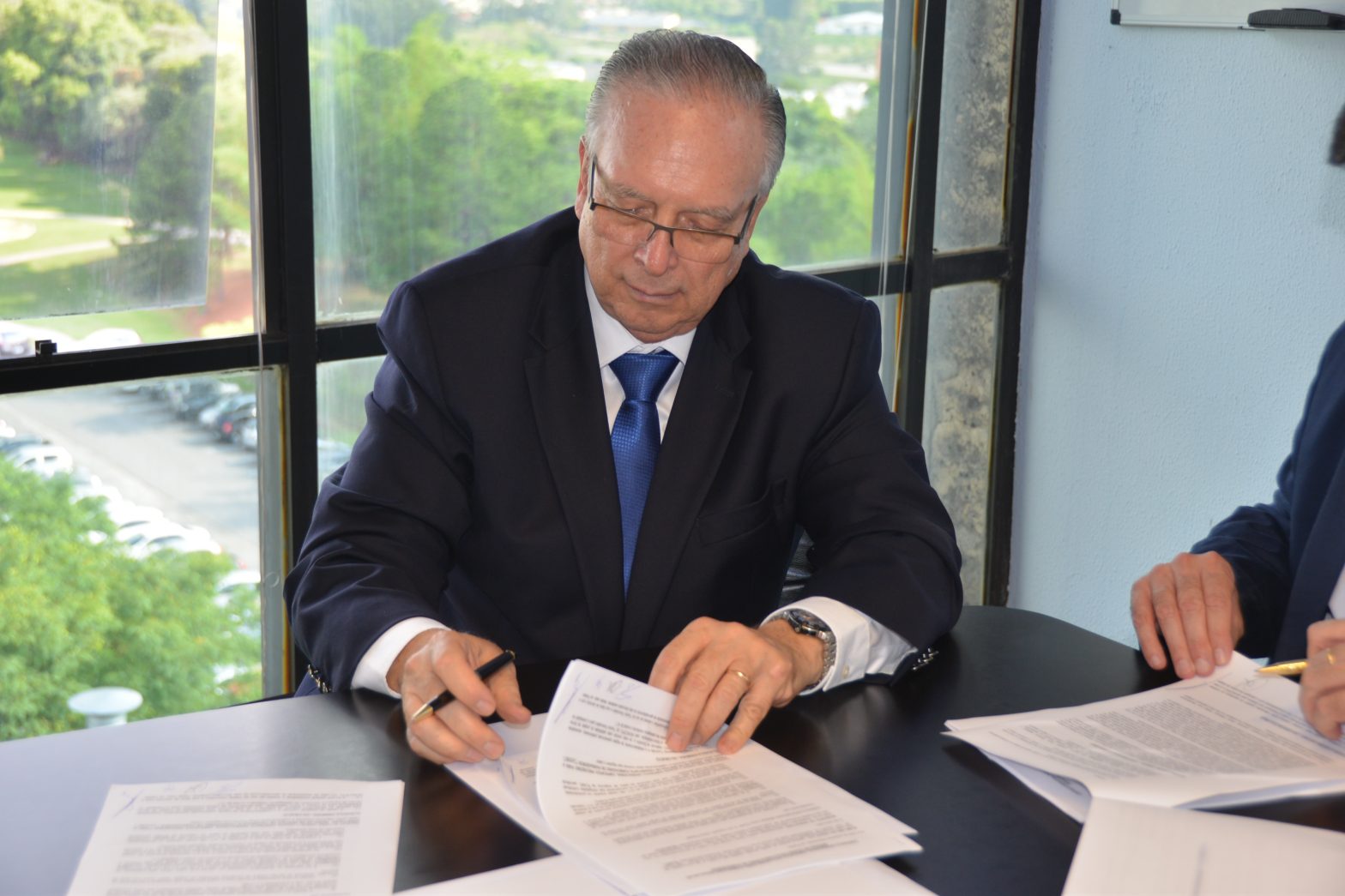
Photo: Sorocaba-secretary
How Sorocaba will increase smart mobility spending
01 November 2018
by Jonathan Andrews
Manuel Manrique spoke to Luiz Alberto Fioravante, Secretary of Mobility and Accessibility, Sorocaba, Brazil about how his city will spend a new US$70-million mobility loan from Corporacion Andina de Fomento (CAF), the Latin American Development Bank
Jaime Holguín, the CAF representative in Brazil, highlighted the quality of the actions as a determining factor to grant the US$70-million loan. What are these actions and when will they be implemented?
The contract signed with CAF in October will be applied in civil works, technical and environmental supervision, environmental and social actions, financing commission, evaluation expenses, external audit and contingencies.
The actions under the Environmental and Road Optimisation Program of Sorocaba, or Total Mobility, are based on the master plan of the road system and the necessary interventions for the development of urban mobility, interconnecting several regions of the city, with the general objective of improving quality of life, while preserving the environment, and social interaction.
The mayor of Sorocaba, José Crespo, said that “urban mobility is the greatest challenge.” Why is this?
In the last 25 years Sorocaba’s population has jumped from 200,000 to 700,000. It would not be possible with only the municipal budget to offer improvements in mobility.
Being an old city with many streams, rivers, slopes, and a railway that crosses the city, Sorocaba has always faced challenges in mobility. These are being overcome with projects including a new ring road.
The Sorocaba Technological and Innovation Park is one of the most important in Brazil. How will the park contribute to mobility? Will the city work with start-ups?
The Technological Park, with the quality of its institutions and international companies that are there, allows Sorocaba to be a better city, taking advantage of the incubator that exists in the park.
Many cities use increasingly advanced digital tools to improve mobility services, like MaaS. What technologies will be used when thinking about the future of mobility in Sorocaba?
We always want to do the best we can for our users. The proposal is to strengthen collective transport by offering benefits for passengers, such as free Wi-Fi which we are gradually implementing. Urbes [Sorocaba’s transit agency] invests in new technologies to get closer to users. Now it is possible to check bus schedules and itineraries through free applications for smartphones, such as InfoBus–developed by Urbes–where it is possible to access bus timetables and itineraries, check the balance of various travel cards, as well as fare prices. It also works offline.
CittaMobi, launched in December 2017, is accessed by 50,000 monthly users. In Brazil, it has registered more than six million downloads, and provides the best route information in real time. Another important function of the application is BIG (Serious Incident Button), which is triggered in case of an emergency such as harassment or other types of violence. The app can be configured for wheelchair users and there is a version for the visually impaired: CittaMobi Accessibility. Both of which are free.
How will smart city concepts be incorporated into mobility actions and initiatives?
The concept of smart cities is only achieved when the city’s development agents understand the power of connectivity across all sectors.
Sorocaba has risen 18 positions in just one year and is now the 42nd most connected city in the country, according to the Connected Smart Cities 2018 ranking. In the State of São Paulo, Sorocaba is in 12th position.
International organisations like CAF have provided US$70 million in financing, and Fonplata and NDB [New Development Bank] have provided US$56 million. The federal government, through the Ministry of Cities, is responsible for contracting resources of US$31 million and US$102 million for BRT. The projects include sanitation, road and pavement optimisation in accordance with principles of sustainability, mobility, the creation of spaces for social interaction and environmental preservation, and the reduction of flooding.
Sorocaba was recently elected one of the three cities in the country to be part of the Fab City project, an initiative of the Institute of Advanced Architecture of Catalonia, MIT Center for Bits and Atoms and the Fab Foundation. Being a Fab City means belonging to a new urban model that focuses on the development of local production to have self-sufficient and connected cities.








